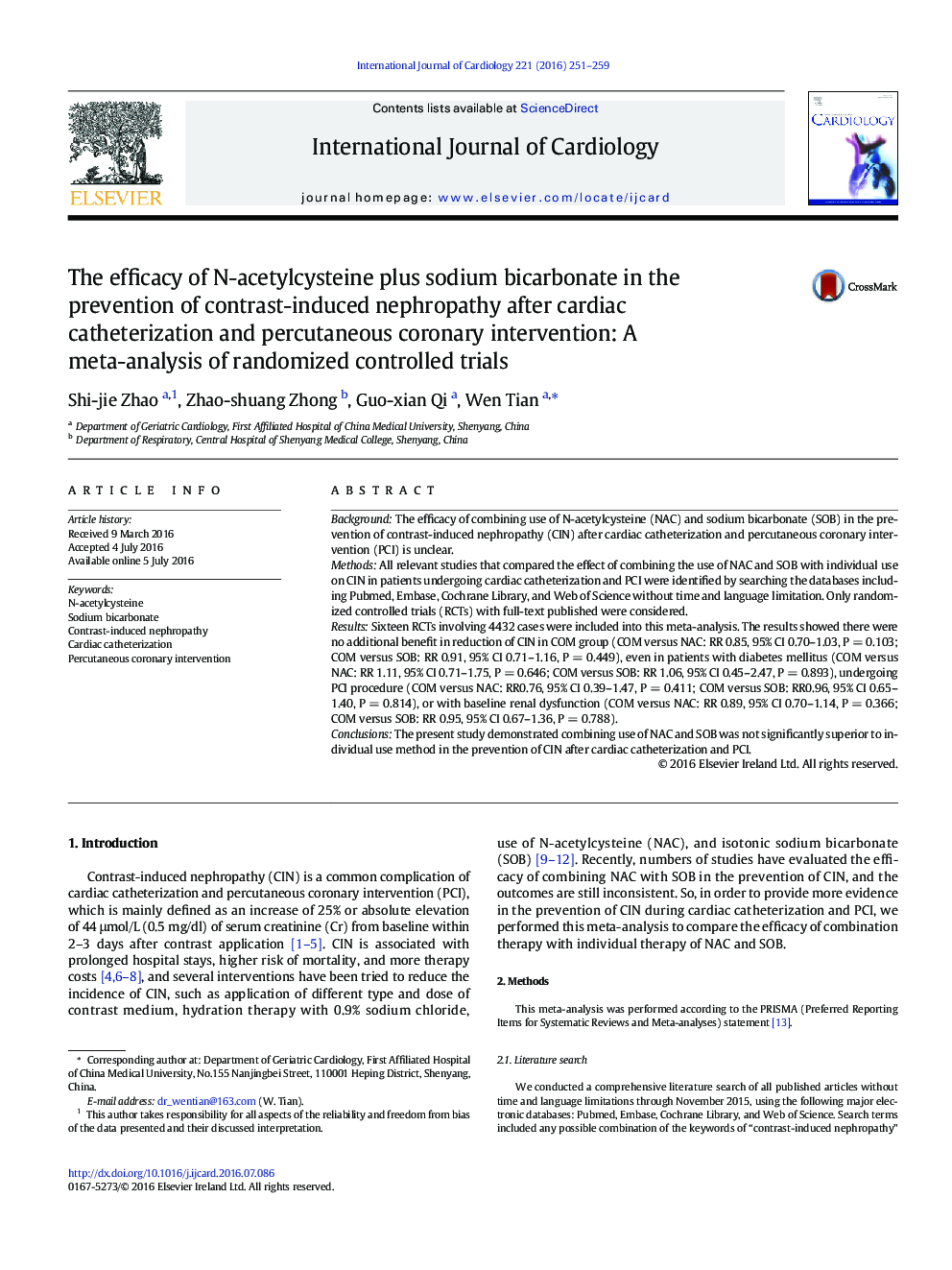| Article ID | Journal | Published Year | Pages | File Type |
|---|---|---|---|---|
| 5962930 | International Journal of Cardiology | 2016 | 9 Pages |
BackgroundThe efficacy of combining use of N-acetylcysteine (NAC) and sodium bicarbonate (SOB) in the prevention of contrast-induced nephropathy (CIN) after cardiac catheterization and percutaneous coronary intervention (PCI) is unclear.MethodsAll relevant studies that compared the effect of combining the use of NAC and SOB with individual use on CIN in patients undergoing cardiac catheterization and PCI were identified by searching the databases including Pubmed, Embase, Cochrane Library, and Web of Science without time and language limitation. Only randomized controlled trials (RCTs) with full-text published were considered.ResultsSixteen RCTs involving 4432 cases were included into this meta-analysis. The results showed there were no additional benefit in reduction of CIN in COM group (COM versus NAC: RR 0.85, 95% CI 0.70-1.03, PÂ =Â 0.103; COM versus SOB: RR 0.91, 95% CI 0.71-1.16, PÂ =Â 0.449), even in patients with diabetes mellitus (COM versus NAC: RR 1.11, 95% CI 0.71-1.75, PÂ =Â 0.646; COM versus SOB: RR 1.06, 95% CI 0.45-2.47, PÂ =Â 0.893), undergoing PCI procedure (COM versus NAC: RR0.76, 95% CI 0.39-1.47, PÂ =Â 0.411; COM versus SOB: RR0.96, 95% CI 0.65-1.40, PÂ =Â 0.814), or with baseline renal dysfunction (COM versus NAC: RR 0.89, 95% CI 0.70-1.14, PÂ =Â 0.366; COM versus SOB: RR 0.95, 95% CI 0.67-1.36, PÂ =Â 0.788).ConclusionsThe present study demonstrated combining use of NAC and SOB was not significantly superior to individual use method in the prevention of CIN after cardiac catheterization and PCI.
